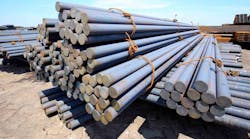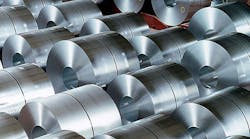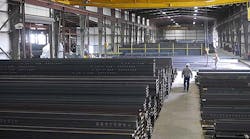The U.S. Dept. of Commerce completed the “Section 232” investigation into steel and aluminum imports that it implemented last April, and recommended that President Trump impose heavy tariffs or quotas on such products. The investigation was initiated to determine whether the imports posed a threat to U.S. national security, using a provision of federal law that allows the president to implement import restrictions on that basis.
Now, the President is required to respond to the Commerce Dept. recommendations for steel imports by April 11, and for aluminum imports by April 19.
Commerce recommended the president to take "immediate action by adjusting the level of imports through quotas or tariffs," and proposed several alternatives, including:
• A 24% global tariff on all steel imports; or,
• Steel tariffs of 53% or higher targeting 12 countries (Brazil, China, Costa Rica, Egypt, India, Malaysia, Republic of Korea, Russia, South Africa, Thailand, Turkey, and Vietnam), with a product-specific quota on steel imports from all other countries equal to 100% of their 2017 exports to the United States; or,
• A quota on all steel products from all countries equal to 63% of each country’s 2017 exports to the United States.
The prospect of heavy import tariffs was cheered by domestic primary steelmakers, but drew heavy criticism from steel-consumers and their representatives.
“The recommendations by the Commerce Department to impose steep tariffs on steel would devastate downstream U.S. steel consuming manufacturers who employ 6.5 million Americans, compared to the 80,000 employed by the domestic steel industry,” according to Roy Hardy, president of the Precision Metalforming Assn., and Dave Tilstone, president of the National Tooling and Machining Assn., in a joint statement.
“If these tariffs are imposed, the U.S. will become an island of high steel prices resulting in our customers simply importing the finished part and threatening thousands of jobs across the United States in the steel consuming manufacturing sector,” they added.
Commerce’s recommendations for restricting aluminum imports include:
• A tariff of at least 7.7% on all aluminum exports from all countries; or,
• A tariff of 23.6% on all products from China, Hong Kong, Russia, Venezuela and Vietnam. All the other countries would be subject to quotas equal to 100% of their 2017 exports to the United States; or,
• A quota on all imports from all countries equal to a maximum of 86.7% of their 2017 exports to the U.S.
The domestic aluminum industry is likewise split in its response to the prospect of import restrictions. The large primary aluminum producers have capacity in many of the targeted nations, while smaller, domestic primary producers would benefit from the trade barriers. The intermediate processors and fabricators, as in the steel industry, would suffer from the limitations on product sources.
“We continue to believe that any actions taken by the president in connection with the Commerce Department’s report should be designed to specifically address Chinese overcapacity and its effects, while avoiding unintended consequences for U.S. production and jobs,” stated Heidi Brock, president/CEO of the Aluminum Assn. “The report should not interfere with the current trading relationship between the United States and critical trading partner countries, but should address the needs of the domestic aluminum value chain, including both primary and downstream U.S. production, and ensure transparency by establishing a monitoring system similar to Steel Import Monitoring and Analysis System,” she emphasized.








